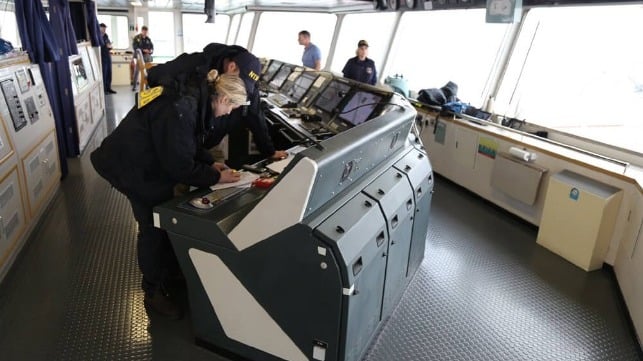Investigators Check Dali’s Fuel with Speculation of Possible Contamination

Further details are emerging on the issues surrounding the fuel of the containership Dali as speculation is centering on a potential fuel contamination issue or problems in the fuel supply system leading to the vessel’s blackout and allision with the bridge in Baltimore. Fuel problems are well known issue for seafarers with several recent high-profile incidents of fuel contamination.
There were more than 120 power or propulsion losses at sea attributed to fuel issues in 2023, according to FuelTrust, a company focused on the maritime fuel supply chain. They highlight that most of these problems happened out at sea away from the public view with the crew responding to rectify the issue.
Fuel contamination issues emerged in 2022 in Singapore, the world’s largest bunker market. The incident involved High Sulfur Fuel Oil (HSFO) that was contaminated with high concentration levels of Chlorinated Organic Compounds (COC). The incident involved more than $120 million of fuel with the Singapore’s Maritime and Port Authority of Singapore (MPA) reporting it believed approximately 200 vessels received the contaminated fuel with about 80 ships reporting fuel pump or engine problems. A narrower incident emerged in July 2023 in Houston, Texas, when more than 30 ships received contaminated fuel and reported damage or failures.
The public speculation over fuel on the Dali emerged after an exclusive report in The Wall Street Journal cited a U.S. Coast Guard briefing the newspaper reviewed that talked of the engines sputtering and a smell of burned fuel in the engine room. Observers noted the lights flickering on and off twice possibly as backup generators were started and became contaminated by the same fuel.
During its briefing late on Wednesday, the National Transportation Safety Board Chair Jennifer Homendy confirmed that they would be closely reviewing the vessel’s fuel. She said they had not yet obtained a sample but would be testing it on a broad range of issues looking at conditions such as viscosity, impurities, and alike. The U.S. Coast Guard reported yesterday that there is 1.5 million gallons of fuel and lube oil on board.
Reviewing records, FuelTrust believes the Dali bunkered in Shanghai and Korea and they report the ship was using Marine Gas Oil, a common but more expensive form of diesel frequently used because of lower emissions in ports and coastal areas. The vessel anchored at the Panama Canal after the transit on March 13, then proceeded to New York, Norfolk, and finally Baltimore. FuelTrust does not believe the vessel was fueled in Panama but believes fuel was loaded in Baltimore.
They point out that typically the charterer, in this case Maersk, is responsible for the fuel purchases, but they have no information if Maersk, manager Synergy Marine, or vessel owner Grace Ocean was responsible for the fuel. FuelTrust highlights that both Maersk and Synergy Marine have stringent systems in place for testing to ensure fuel integrity.
The fuel that was loaded in Baltimore under normal procedures would have been placed in settling tanks. Also, it should have been undergoing verification tests, suggesting the ship should not have been using the most recently loaded fuel.
Media reports are also highlighting an issue identified during a Port State inspection in June 2023 in San Antonio, Chile. The ship was cited for an issue but was not detained. The Maritime and Port Authority of Singapore as the flag state regulator clarified the issue reporting it was a faulty monitor gauge for fuel pressure that was rectified before the vessel departed the port.

that matters most
Get the latest maritime news delivered to your inbox daily.
No further problems were reported with the Dali during a subsequent Port State inspection by the U.S. Coast Guard in New York in September 2023. The MPA reports the Dali's next classification and statutory surveys are due in June 2024.
Speculation will continue fueled by unconfirmed reports that the ship might have been experiencing power problems while on dock. She was in Baltimore for nearly 60 hours. During an earlier briefing yesterday, the U.S. Coast Guard said the ship was performing routine engine maintenance while in Baltimore.
